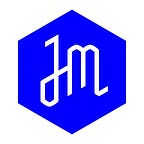Joanne Leonard, Renowned for Her Trailblazing Photographic Practice, Gives 11 Works to the Jewish Museum
Recognized internationally for her pioneering work in photography and her engagement in feminist issues these works are the first by the artist to enter the Museum’s collection
Over a career spanning nearly 60 years, Jewish-American artist Joanne Leonard (b. 1940, Los Angeles, CA) has poignantly captured scenes of sincerity and pensiveness in both private and public spheres. The Jewish Museum is honored to have received from Leonard a gift of 11 artworks that are now a part of the collection. This body of work represents a comprehensive cross section of Leonard’s multidisciplinary practice, including photography, collage, and mixed media dimensional pieces, each emblematic of a genre she describes as “intimate documentary.” Continue reading to learn more about some of the works in the gift.
Leonard began photographing within the homes of friends and family in the 1960s, synthesizing explorations of community and shared experience. Sonia is a photo taken of her pregnant sister-in-law in the backyard of their home in Seattle — beautifully capturing Sonia in the midst of hanging laundry on the line, the sunshine illuminating the silhouette of her body framed by her gown. This image, along with others from this earlier period of her career, explores womanhood and female experience through portraits of family as well as the spaces they inhabit.
In 1963, Leonard moved with her then-husband to West Oakland, California, and lived there until 1972. The move away from immediate family precipitated a shift in her subjects, turning her camera to friends and neighbors in the surrounding community. Though photographing beyond her nuclear family, she nevertheless captures moments of tenderness, joy, and intimacy, such as in the photograph Kids hugging.
In 1975 Leonard was awarded a grant from the National Endowment of the Arts (NEA) and was tasked with photographing the impact of technology on American life. She chose to document the objects, appliances, and idiosyncrasies of domestic interiors, as seen in Two can openers, kitchen counter.
Later in her career, Leonard extended her practice into three dimensions. In Old-fashioned stoves, Leonard reworks a photo taken during the course of the NEA grant, layering in dimensional objects. In front of the original image of a kitchen in Los Angeles, Leonard added a dollhouse stove sourced from a local hobby shop, both as a way to more intimately explore that space, and as a way to bring the outside world into direct dialogue with these private interiors.
Leonard’s work is deeply personal, and Mansion of Happiness is no exception. The work takes its name from the eponymous 19th century board game, which you can see in fragmented sections of green and red across the composition. The photograph in negative of a woman at the upper right is a portrait of her grandmother taken by American photographer Edward Weston. This collage also includes passages of text from authors Carolyn Heilbrun and Hannah Arendt, as well as transcriptions of doctor’s notes describing Leonard’s own mother’s deterioration from Alzheimer’s. The work is part of a series of collages called Not Losing Her Memory that Leonard began in 1991, and brings together the influence her mother’s battle with Alzheimer’s coupled with listening to Anita Hill’s public hearings on the radio. These two seemingly disparate experiences coalesced to describe Leonard’s sense of a predominant narrative in which women’s memories were positioned as unreliable and untrustworthy.
Leonard’s most recent body of work pulls these various threads of her practice into the contemporary period. While her collage work of the 1970s developed out of a reaction to photographing within her own home and community, capturing moments of family, safety and love, collage became a way to contrast this security with the horrors of the outside world. Leonard’s work places those two forces on the same plane, so that world events may intrude on family life. In Leonard’s view, this body of work is an outgrowth of her collages, which involve comparisons and contrasting visual analogies. Covid cars and cut-out cows, which is part of The Newspaper Diary series, grew out of this interest in juxtaposition, as well as from her love of the formal composition of an open book. Here, Leonard has paired a photograph of a Thames and Hudson book called Paper Cuts, with a clipping from The New York Times, showing a covid testing site in Austin, Texas from July 3, 2020.
— Kristina Parsons, Leon Levy Assistant Curator, The Jewish Museum
